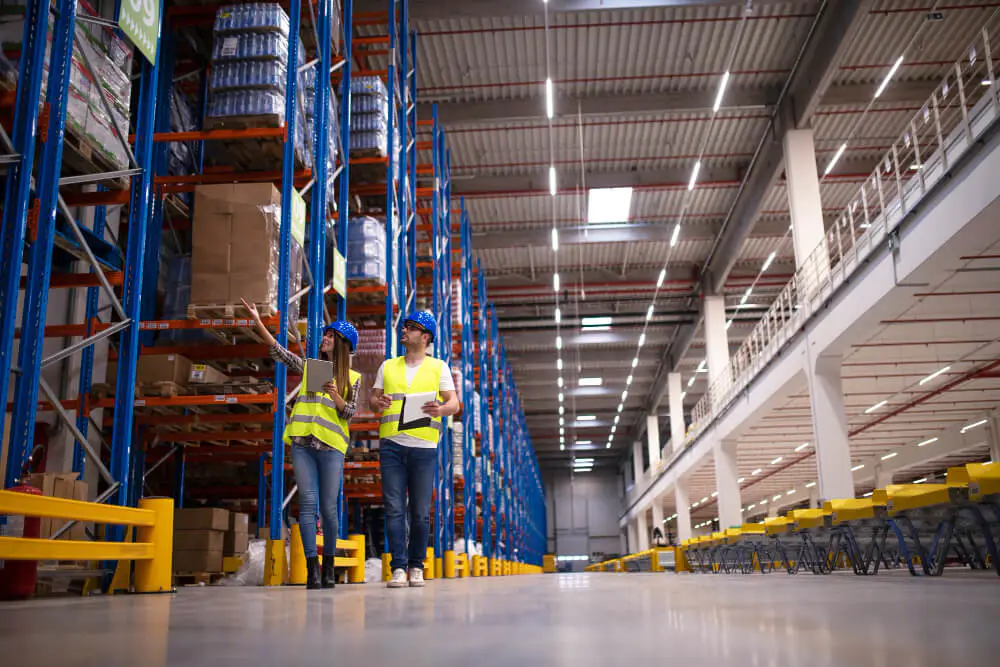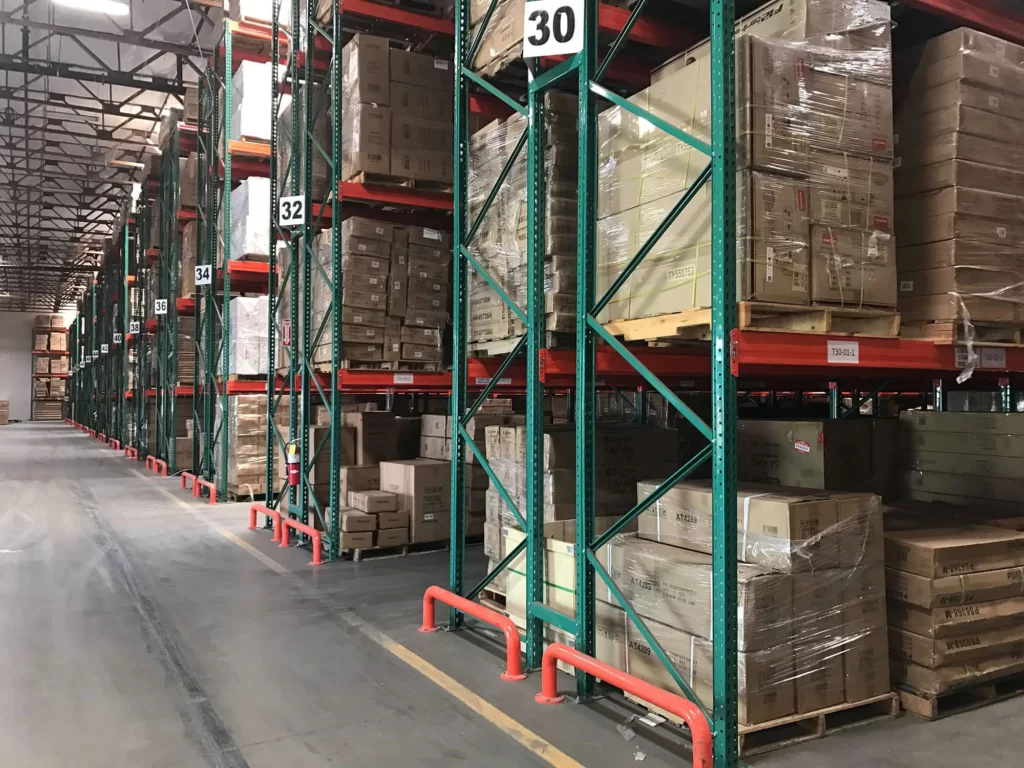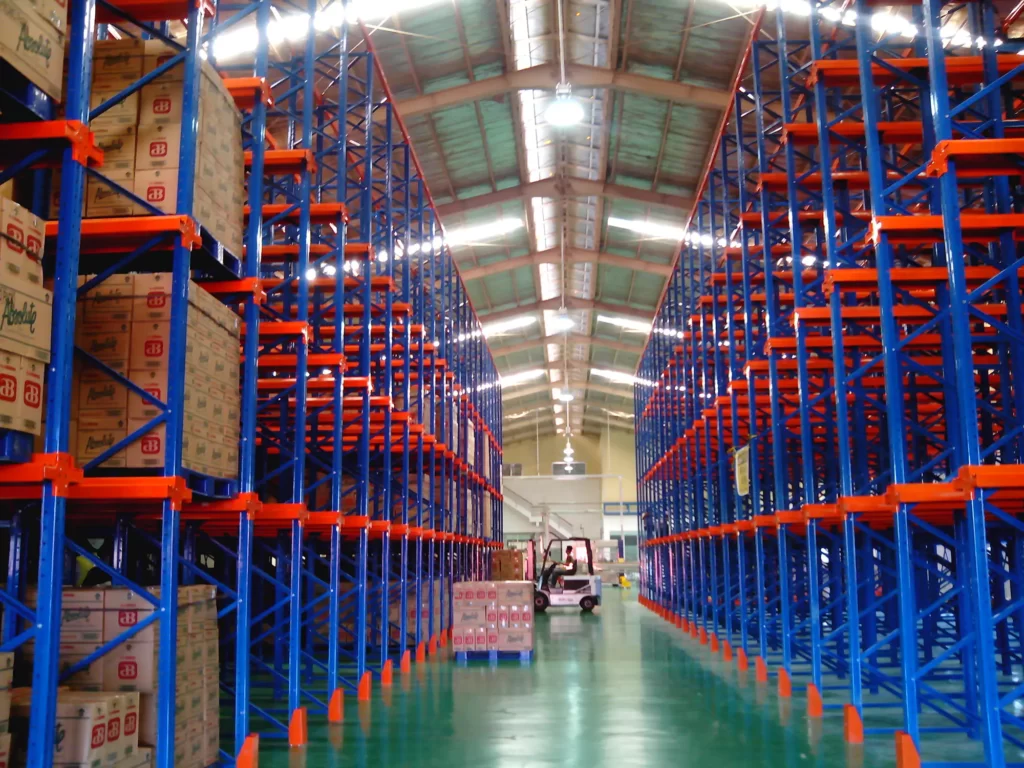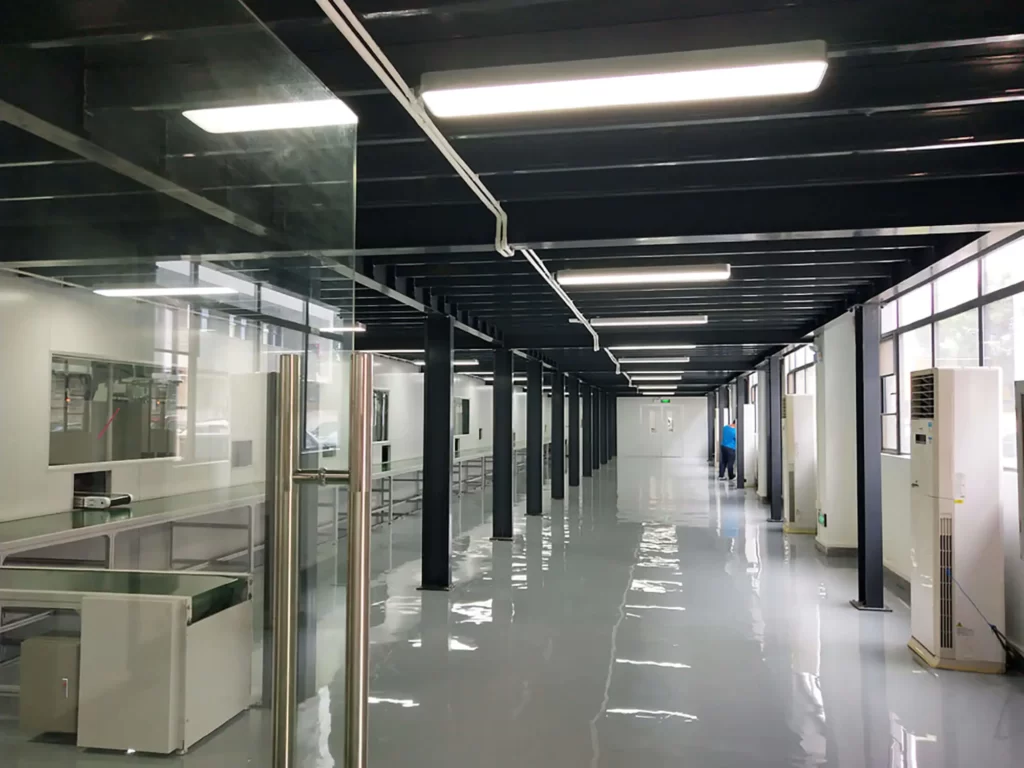“What is warehousing?” is probably the top-of-mind question of every logistic newbie. While most novice operators and managers think that warehousing is equivalent to product storage in inventory facilities, it is not entirely true.
Indeed, this logistical activity encompasses more functions than that. Warehousing plays an indispensable role in modern supply chain management, ensuring a smooth flow of merchandise from inventory to distribution for every business.
An efficient warehousing operation is the solid foundation for inventory control optimization, thus driving more revenue for companies. So, if you are fascinated in exploring the various wonders of warehousing, this article is for you!
By reading this blog post, you will sequentially go through what warehousing is and why it is important. It also equips readers like you with warehouses’ core functions, types, and benefits. Now, let’s get into it!
What Is Warehousing: An Accurate Definition
Let’s first answer the topic question “What is warehousing?”. Warehousing is the practice of stocking commodities for the purpose of later sale or distribution. Thus, besides offering the storage function, these facilities also serve as distribution hubs, fulfillment centers, and other service providers.
When thinking about warehousing, most people often imagine these massive buildings solely dedicated to storing products. It may be the case, but mainly for large enterprises that can afford to splash out on their own warehouse.
But for small startups, they’ve got a different approach. Oftentimes, all they need is a spare room to handle their inventory needs. As for the rest of the companies, they can either set up their own facility or rent space in those 3PL warehouses.

What Makes Warehousing Essential
Without proper warehousing activities, it’s hard to imagine how to get products from manufacturers to customers’ hands. Thus, there is hardly any dispute about the crucial role of warehousing to businesses and the overall economy. But if you are still not convinced, here are a few to reasons to justify the importance of warehousing:
- Firstly, warehouses facilitate efficient order fulfillment by allowing businesses to retrieve products promptly when required. This greatly helps producers avoid delays in client deliveries or supply shortages, which might result in production downtime.
- Moreover, this logistical activity allows organizations to expand strategically by locating facilities closer to important suppliers and customers. This way, companies can minimize transportation expenses while enhancing logistical efficiency, contributing to a better bottom line.
- Finally, it provides a secure location for storing inventories, ensuring that items remain in top condition by safeguarding them against theft, damage, and adverse weather conditions. It also allows companies to purchase goods in large quantities and keep enough stock to meet customer demands.
Let’s take an e-commerce company as an example to demonstrate warehousing’s importance. This type of firm depends extensively on warehousing, not just to store its diverse product offerings but also to effectively fulfill customer orders.
By properly designing and organizing warehouse space, using technology, and implementing efficient picking and packing processes, e-commerce businesses can accomplish quicker order processing times while lowering operating costs. Obviously, efficient warehousing activities will drive more profits for them.
Core Functions Of Warehousing
Warehouses serve many functions, including activities such as receiving, sorting, storing, monitoring inventory levels, processing orders, and delivering items. In this part, you will explore the core functions of warehousing.
Receiving Products
This first function refers to the act of getting and checking incoming shipments of products from suppliers or merchants. Typically, the receiving procedure begins with the truck driver offering the shipment’s key details, including loads, amount, and expected time of arrival (ETA).
An efficient warehouse reception procedure can contribute to the optimization, cost-effectiveness, and efficiency of inventory management and fulfillment operations.
Storing Products
After receiving, products are stored in specified areas of a warehouse. You can store a plethora of commodity options here, such as raw materials, finished goods, and even surplus inventories.
One significant benefit of stocking in a warehouse is the ability to maintain adequate inventory levels and guarantee that items are readily accessible when required. To maximize storage efficiency, ensure to categorize your items by size, type, and demand frequency. Categorization enables more enhanced product retrieval when sold.

Picking Products
The next warehousing function is product picking, which is the process of choosing and collecting items from storage to fulfill client requests. Precise and efficient order picking is critical to customer satisfaction.
Warehouse pickers generally employ handheld mobile tools or pick-to-light systems to assist them in the picking process, as these devices provide real-time information on the shelf location and required amount of each SKU.
Packing Products
Once your products reach the warehouse’s shipping dock, they will undergo the packing process to get ready for delivery. This entails employing bespoke shipping boxes or containers to securely package things, ensuring that they stay unharmed throughout the whole process.
Packing also includes labeling goods with essential information, such as barcodes and guidance on how to handle them. Effective packing needs careful planning and execution to reduce the risk of damage, maximize inventory space use, and assure timely delivery to clients.
Delivering Products
Last but not least, product delivery is about, as the term clearly suggests, shipping goods from the warehousing facility to the ultimate destination. As simple as it may seem, this warehousing function actually includes a variety of duties, such as reviewing orders and working with carriers to ensure timely delivery.
A successful delivery must achieve two goals: ensuring precision in both product selection and shipment information to guarantee customer satisfaction while minimizing expenses to be profitable.
Exploring Common Warehousing Types
Warehouses are classified into three main types: (1) private warehouses, (2) public warehouses, and (3) bonded warehouses. Let’s delve into each type to understand how one differs from another.
Private Warehouses
This first type refers to warehouses developed and owned by enterprises that manufacture the products they store. Because of the high cost of construction and maintenance, private warehouses are often not the option favored by businesses. Only large companies have enough financial resources to actually build their own warehouse.
In some cases, owners of private warehouses can rent out parts of their available spaces to others when their inventory demands are low. This way, businesses can both hold a sufficient stock level and earn profits from leasing.
Public Warehouses
Also known as duty-paid warehouses, public warehouses are storage facilities owned by third-party companies that rent out space to multiple businesses for a fee. They offer a viable option for small and medium enterprises that cannot afford to build and maintain their own private facilities.
Public warehouses adhere to government norms and are often located near transportation hubs. They also use modern equipment for efficient handling of goods, allowing companies to securely store their items while benefiting from services like packaging, grading, and even using stored goods as collateral for loans.
Bonded Warehouses
This third type of warehouse is a specialized storage facility for imported goods that have not yet been cleared from customs or had duties paid. Located near ports and borders, bonded warehouses allow importers to defer tariff and tax payments until distribution.
Goods are safely housed under strict customs oversight while processes like labeling and repackaging occur. This provides importers with flexibility to manage cash flow by delaying duty fees, thus facilitating international trade. Importers maintain control of bonded inventory until formal customs entry and payment of required fees are done.

Essential Components For Warehousing
To pull off the various functions above, warehouses need a wide array of components. These tools are indispensable parts for every inventory facility to monitor stock levels and store goods safely. Let’s explore some fundamental components of warehousing below:
- Shelving systems: These elements are like the backbone of every warehouse that actually houses companies’ products. By utilizing the optimal shelving solution, warehouses can maximize their storage capacity and access to goods.
- Climate control system: This component is especially important for products that degrade when exposed to excessive heat. Other items that demand refrigeration, such as certain pharmaceuticals or laboratory merchandise, are also beneficial to the implementation of such a system.
- Warehouse management software (WMS): Software for inventory control and warehouse management is extremely important for large-scale facilities. If properly used, warehouse managers can access valuable intel, including real-time data regarding the location of each individual unit within the premises.
- Product handling equipment: Warehouses cannot function without equipment that is capable of transporting goods from one area to another, such as forklifts, pallet jacks, or conveyor belts.
- Backup generator: As the name suggests, this piece of equipment is for backup purposes only. Having a backup generator enables uninterrupted power supply in the event of power disruptions, which can greatly impact warehouse operations.
- Warehouse personnel: The last element that renders a complete and functional warehouse is the staff working in it. This workforce ensures products flow smoothly and customer orders are fulfilled precisely.
Amazing Benefits Of Warehousing
Now that you know what warehousing is and why it is important, as well as its core functions and types, it’s time to grasp some amazing benefits this concept has to offer. This part will outline the top warehousing’s advantages.
- Managing inventory better: Companies with access to warehouses are capable of organizing their products more efficiently. This not only allows them to monitor their inventory level better but also facilitates faster product retrieval and packaging for shipment.
- Understanding labor requirements: Businesses can have a clearer understanding of their labor requirements if they have a well-organized warehouse. They can easily recruit only the number of staff they need at any given time, including peak seasons.
- Enhanced safety: A warehouse with adequate space can aid businesses in securing their items. It comes with various add-ins, like temperature-controlled storage areas, that can accommodate your products’ unique requirements. Managers also have greater authority over safety protocols and training, ensuring the security of both their employees and products.
- Highly affordable: Owning a warehouse is indeed a more economical solution as opposed to renting one. Despite the hefty upfront cost, organizations are able to modify the inventory space in a way that optimizes their operations. Plus, you can even lower your overhead expenses.
- Speeding up delivery time: If your warehouse is situated in a central location relative to the company’s clientele, it can expedite product delivery. Therefore, when building a warehouse, ensure you pick a centralized location to improve both the efficiency and cost-effectiveness of the delivery process.
- Effortless processing of returns: To tackle returns, businesses should designate a specific location in the warehouse for them. This practice not only makes processing returns a breeze but also paves the way for supplementary return services, such as tracing information about the returns’ locations.
Warehousing Risks
Besides the evident benefits above, there are also certain risks associated with warehousing. The following content does not mean to scare you off, but rather to cover all aspects so that you have a more all-rounded view of warehouses.
- Potential physical distress: Frequent handling of large, unwieldy items can potentially lead warehouse personnel to physical distress over time. However, it’s challenging to spot this risk due to each member’s physique. It’s also tough to assess how long each person can endure prolonged physical labor.
- Dangers from machines’ operations: The improper utilization of warehouse machines can also result in significant harm to employees. In the absence of adequate safety precautions, numerous apparatuses with moving parts can lead to catastrophic incidents.
- Harms from product handling vehicles: Oftentimes, warehouse staff must perform the tasks of product loading and unloading. And they surely pose certain dangers, such as being trapped between cargo docks, vans, or forklifts. They can also be hit by unsecured objects or collapsing dock plates.
- Risks from falling objects: There are risks that plummeting items will injure your squad. Furthermore, when transported from one location to another, it’s likely that items stacked above can fall off and hurt warehouse employees.
- Exposure to toxic substances: As mentioned above, warehouses can hold all types of products, including toxic substances. These hazardous items pose a significant occupational danger. Besides, if not safeguarded appropriately, cleaning supplies can also harm warehouse staff.
- Slipping and tripping: These risks are obviously the leading cause of workplace accidents, which can stem from various issues in warehouses. Some of the causes include the floor being wet, poorly illuminated, having concealed steps, or being littered with boxes or debris.
Top Warehousing Services In Addition To Storage
Suppose that a business opts for the use of public warehouses to facilitate the distribution of its products to clients. In addition to the core function of stocking goods, warehousing companies offer many other services, including:
Contract Warehousing Service
For those companies that lack the capital resources to construct their own facilities but still wish to stock products in specific locations, contract warehousing is a true savior. This service often lasts for a few months or years and is widely adopted by startups and rapidly expanding businesses.
Contract warehousing also offers companies a shortcut to distribute products to customers within a short period of time. In today’s fiercely competitive business environment, this is a huge advantage. Plus, there’s no need to invest a big chunk of cash in building your own premise from the ground up, which requires a lot of time.
Stock Management
Another service you can utilize in public warehouses is stock management. Companies can monitor their products and access essential information, like warehouse cycle counts, to evaluate their deliveries to customers.
By using this information, businesses can timely conduct corrective actions to augment their cycle counts. Additionally, stock management enables enterprises to simply eliminate and reduce receiving errors.
Order Fulfillment Support
One of the first additional services offered by warehousing companies is order fulfillment support. It includes order handling, packaging, labeling, and delivery.
This support provides great benefits to businesses, as it is a means to reduce operational costs associated with infrastructure maintenance, enable them to concentrate on fundamental tasks, and expand their consumer reach across multiple channels.
Cross Docking
In essence, cross docking facilitates the transportation of goods from multiple manufacturing premises to a strategically positioned hub, in close proximity to the end-users, for quicker shipments. Products that have arrived from production facilities are separated into numerous shipments prior to being dispersed to clients.
This service can be financially advantageous for manufacturers who are unable to implement customized order fulfillment due to constraints such as limited physical space, equipment, and personnel.
Transportation Service
Businesses can also utilize the transportation services offered by a handful of warehousing companies. The mode of transportation, including rail, road, ocean, or air, may vary depending on the client’s requirements.
Certain public warehouses that provide this service also allow clients to monitor the real-time movement of items from one location to another. This transportation option can determine the success or failure of any business.
Transloading Service
Another brilliant service that some warehousing enterprises offer is transloading. Basically, it refers to the process of transferring goods from one mode of transportation to another along a predetermined path.
Transloading services play a pivotal role in both domestic and international shipments. The primary objective is to minimize transit time through the use of all available resources and ensure the freight follows a direct route to its intended destination.
Comparison Between Warehouses, Distribution Centers, And Storage Facilities
So far, you have familiarized yourself with various aspects of warehouses. However, in order to understand warehousing more deeply, it’s essential to recognize its differences from similar terms. This part will compare warehouses with two other concepts: distribution centers and storage facilities.
Warehouses VS. Distribution Centers
The terms “warehouses” and “distribution centers” are often used synonymously. However, there’s a thin line between them that sets them apart. The difference lies in the scope of service each facility provides.
While warehouses merely entail secure storage of products, which can encompass other tasks like goods receipt and order picking, distribution centers go the extra mile by offering extra services, including return processing and order monitoring.
Warehouses VS. Storage Facilities
It’s easy to spot the distinction between warehouses and storage facilities by also looking at each term’s scope of service. Although warehouses serve as repositories for goods, their purpose is to facilitate sales. Thus, a vast majority of warehouses operate at extremely high volumes and speeds.
On the other hand, storage facilities primarily pertain to the safeguarding of non-commercial assets. Oftentimes, people place items that no longer fit in their already-full garages with the intent of long-term holding.
What To Consider When Choosing A Warehouse
Selecting a warehousing plan that fits your company’s demands is quite daunting, as there are so many aspects to think about. If you are having trouble making the decision, let’s consider the following factors:
- Location: A strategically situated warehouse can significantly improve your business’s logistics management and operations. It also grants your company a competitive edge by diminishing transportation expenditures.
- Cost per product: This term denotes the costs accrued by a business for every unique product housed in the warehouse. This figure can be higher if a company employs personnel to handle hazardous materials or maintain specialized storage conditions.
- Technology: The implementation of contemporary technology solutions, such as automation and RFID (Radio Frequency Identification), can greatly enhance productivity, inventory control, picking precision, and order fulfillment.
- Anticipated requirements: When choosing a warehouse, it is prudent to consider your future needs. For example, if you plan to diversify your product line to incorporate items that need climate control, you should opt for facilities with climate control capabilities.
Conclusion
Well, that brings it to the end! “What is warehousing?” is no longer a question that can bother you, as you have gained comprehensive knowledge associated with the concept through this informative post.
In short, warehousing facilitates the efficient storage and management of inventory for businesses, thereby reducing transportation expenses and offering a centralized place for goods storage.
Depending on their demands, companies can choose a suitable type of warehousing, including private, public, and bonded warehouses. Each facility also requires certain components in order to function properly. And if you want to choose an ideal warehouse, make sure to think about the various aspects mentioned in the article.







